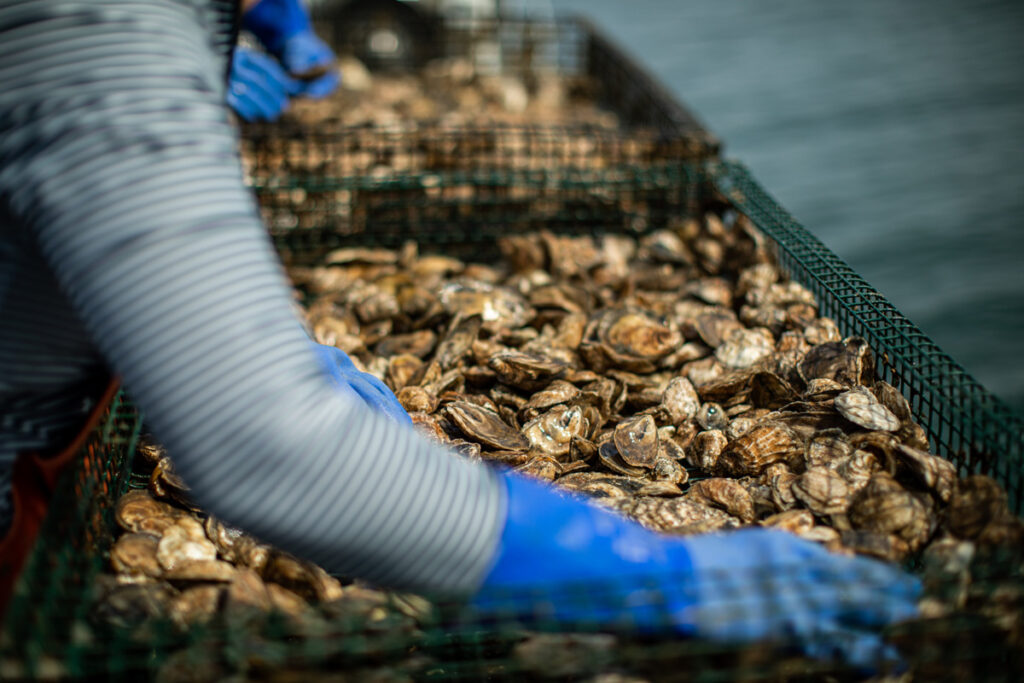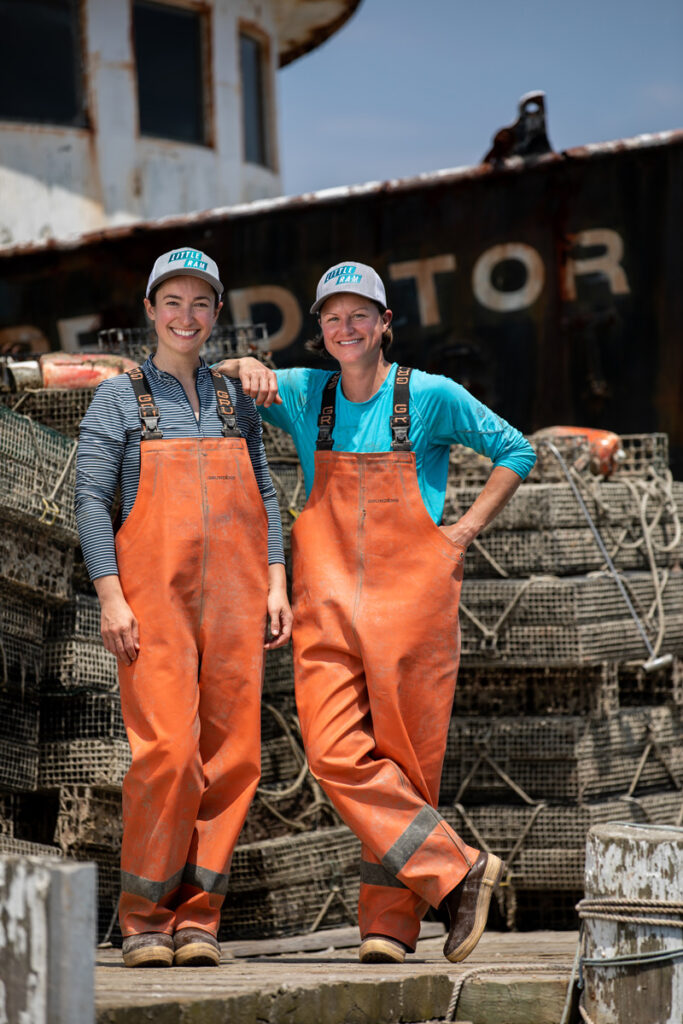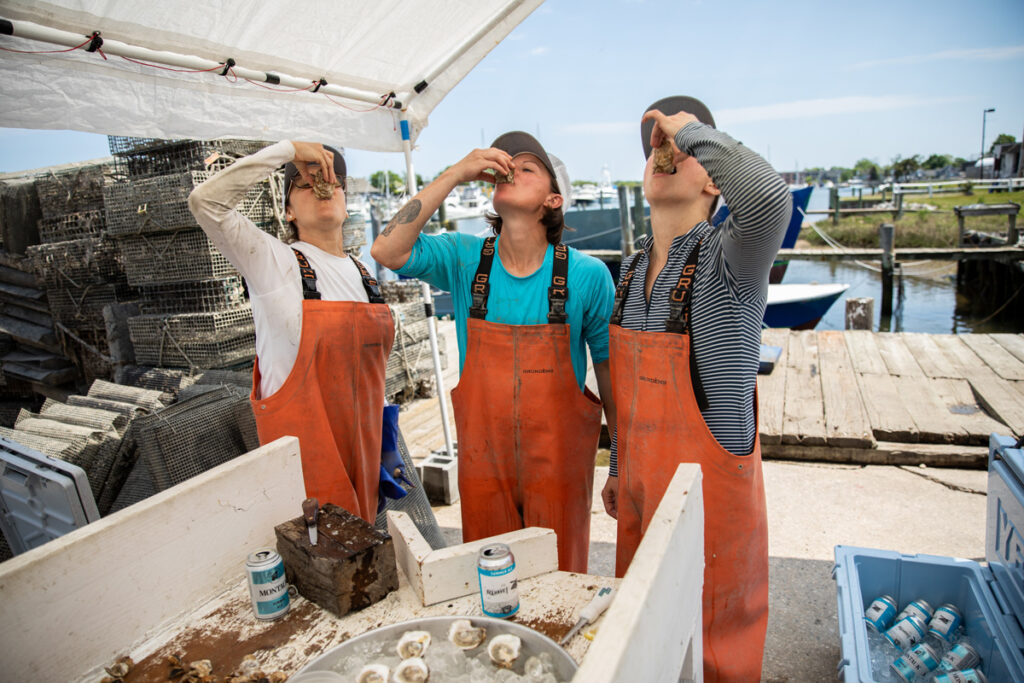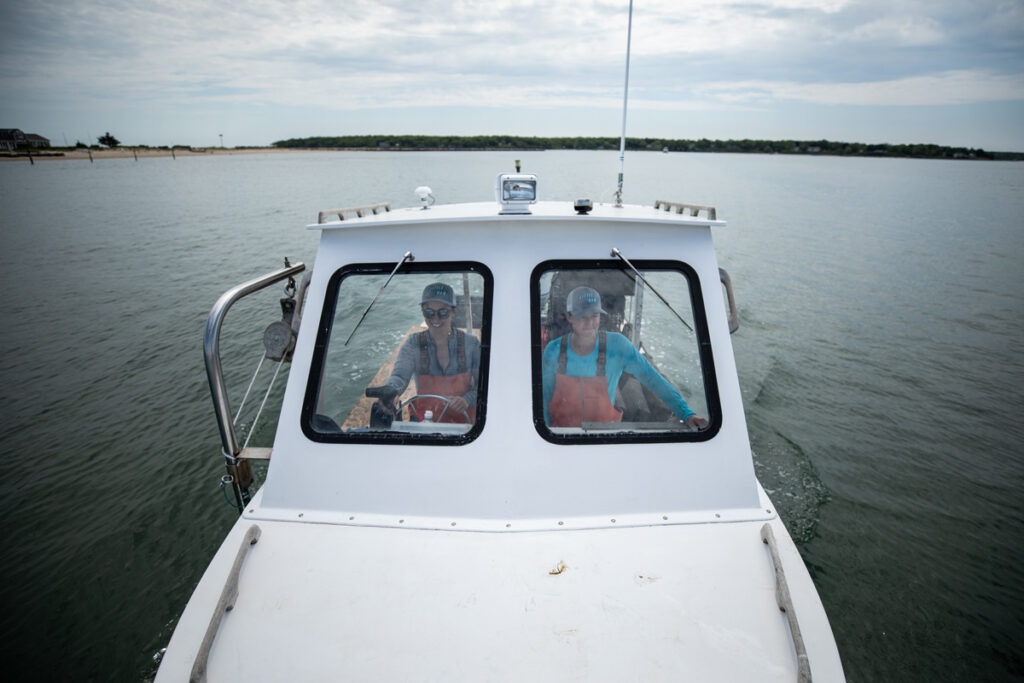After 17 years working in high-end interior design and advertising, Elizabeth Peeples and Stefanie Bassett needed a change. They wanted an environmentally sustainable, outdoor lifestyle that would allow them to work with food. Says Bassett, “We were ready to get our hands dirty.”

In 2018, the couple purchased a 10-acre oyster farm in Gardiner’s Bay, between the tines of the North Fork. They sold their Brooklyn apartment, moved to Southhold, and had their first son, Finn. After a year, they quit their lucrative jobs for the challenges of full-time oyster farming.
Nowadays, the pair are on the water most days of the week, year-round. In the mornings, they motor LALU—their restored 22-foot lobster boat—from a Greenport slip to their oyster farm off the eastern shore of Shelter Island.

Colorful buoys on the cyan water mark the cages. As LALU draws near, Bassett leans over the side with a gaff hook to snag the line that attaches the buoy to an oyster cage. She feeds the line onto a starboard mounted crane that raises the weighty cage, then Bassett muscles it over the gunwale.
Little Ram Oyster Company practices subtidal, off-bottom culture farming with cages suspended inches above the bay floor. The location and tidal structure of Little Ram, and every oyster farm, produces a distinctive “merroir.” Little Ram oysters, grown in the nutritious confluence of Peconic Bay, Orient Harbor, and Gardiner’s Bay, are blessed with a crisp, briny flavor that’s as expressive of these 10 acres of ocean as wine is of the vineyard where its grapes were grown.

Back on land, the farmers cull, sort, and mechanically tumble the oysters. Periodic machine tumbling helps the oysters to build deeper cups, plumper meat, and harder, less brittle shells. Market-ready oysters are separated for sale while tumbled and undersized oysters are returned to the farm. Starting from seed, it takes roughly 18 months for Little Ram’s oysters to reach the market. In that time, each oyster will have passed through the hands of Peeples, Bassett, and Bridget Nelson (their employee) dozens of times.

This story was originally published in our 2021 Summer/Fall issue



